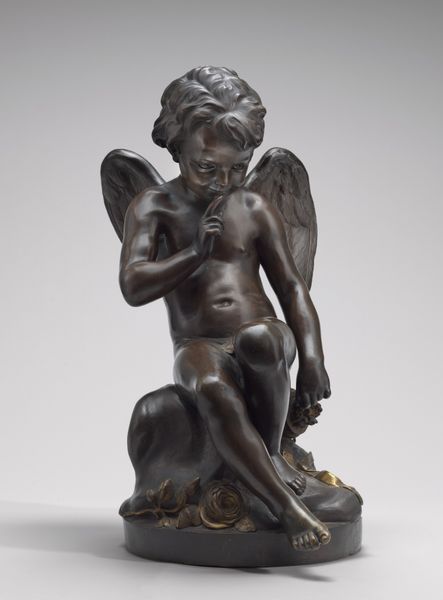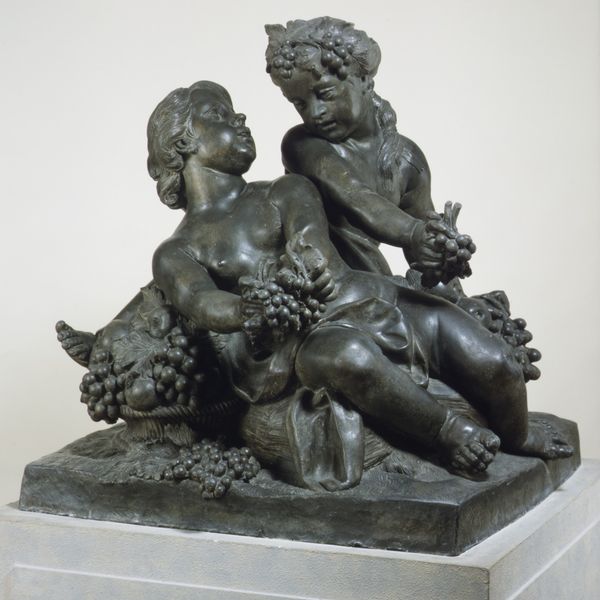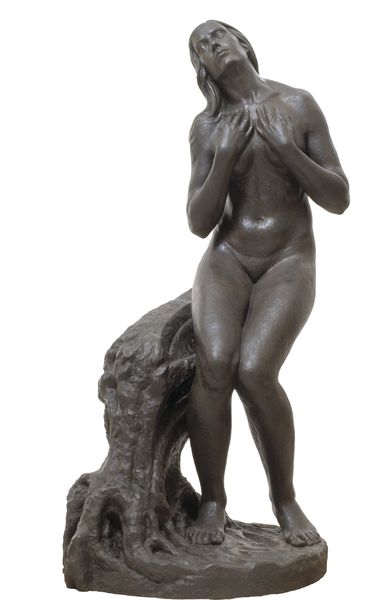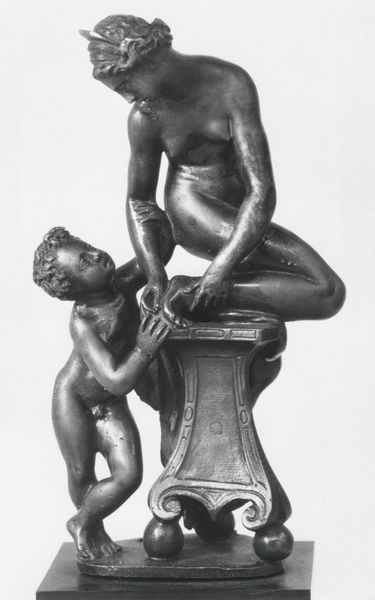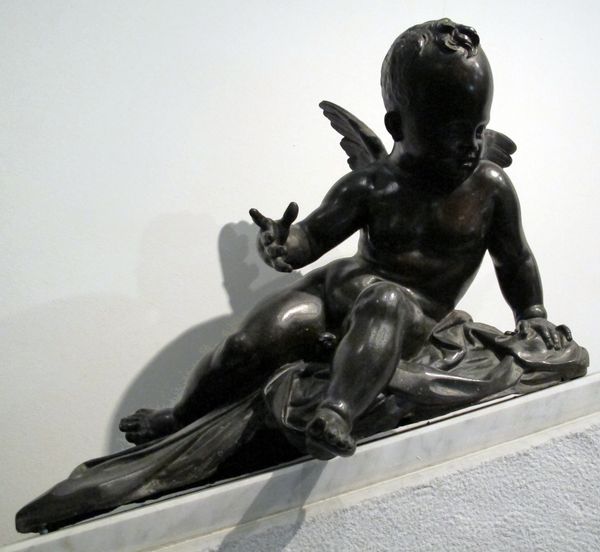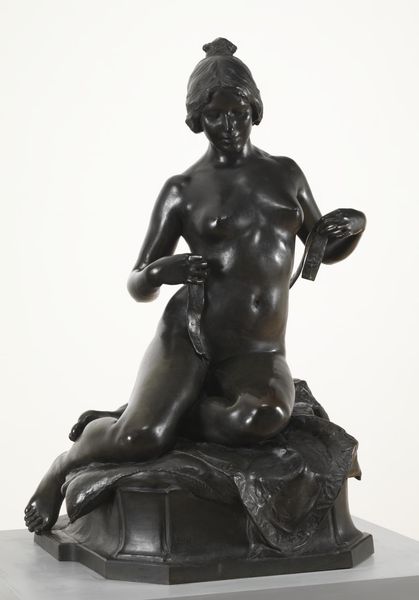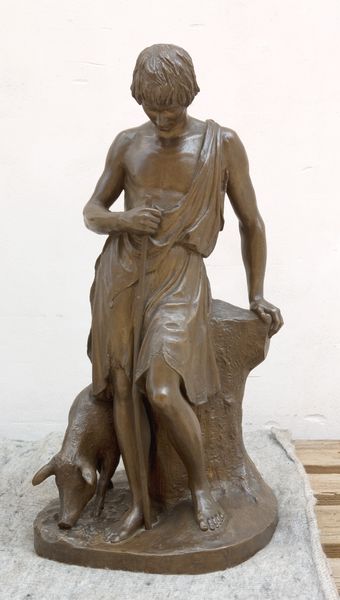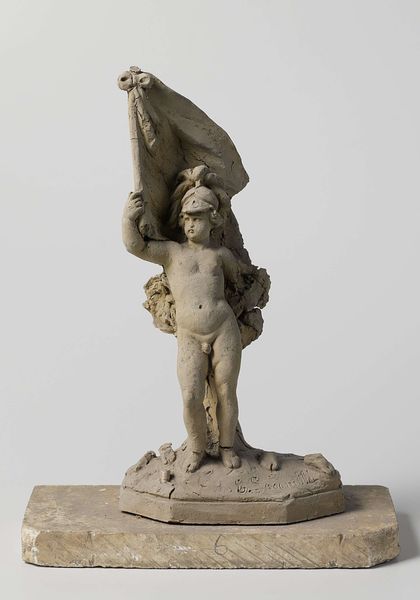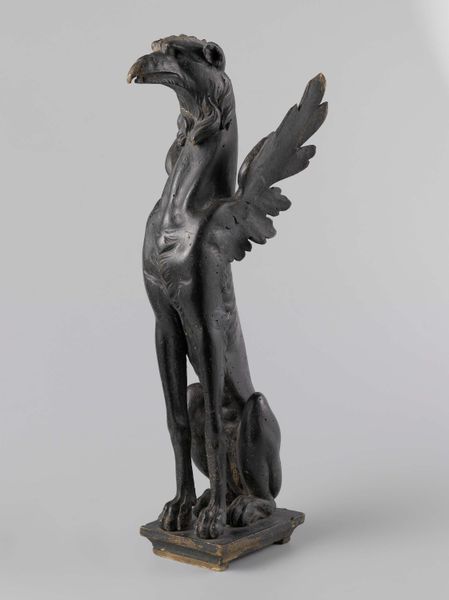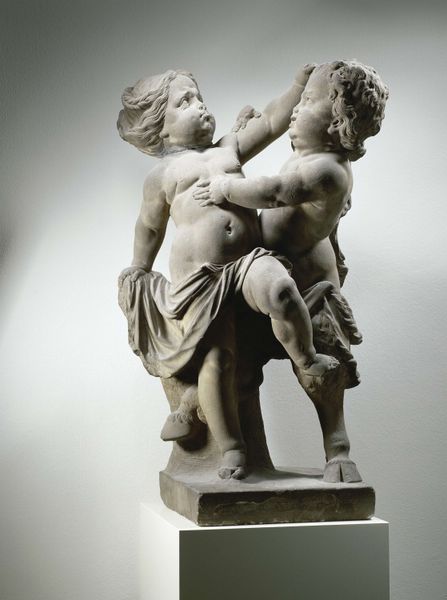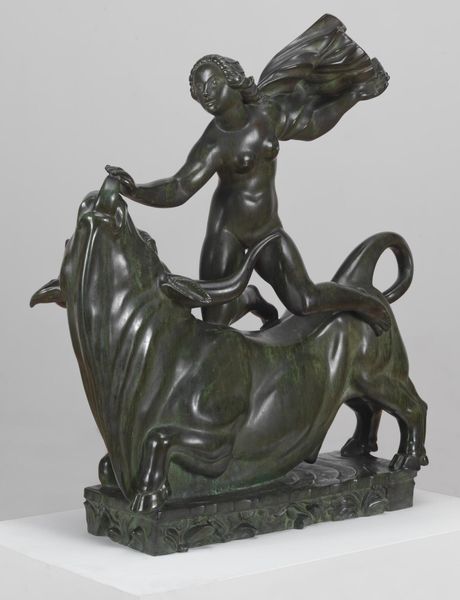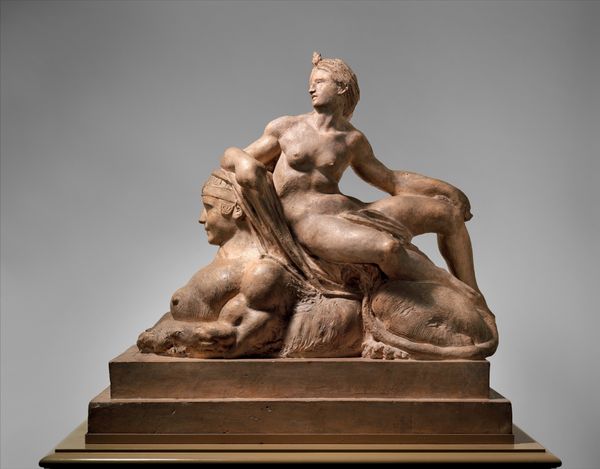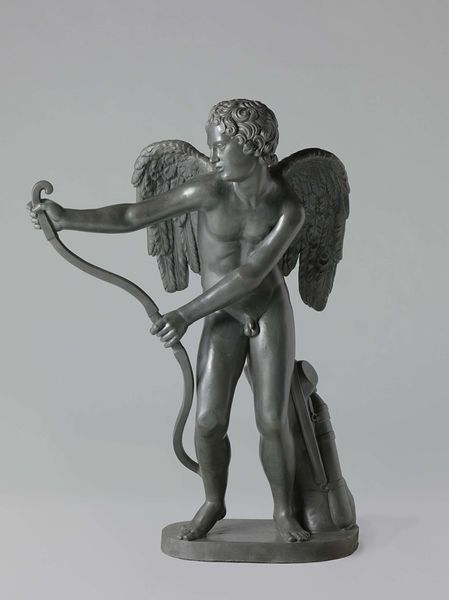
Dimensions: 53 cm (height) (Netto)
This bronze sculpture, "Den triumferende Amor," or "The Triumphing Amor," was created by Th. Stein, a Danish artist who lived in the 19th century. It depicts the classical figure of Amor, or Cupid, the god of love, seated atop a lion. The image of Amor taming a lion can be viewed in the context of the time it was made. In 19th-century Europe, classicism was often used to justify political power. By portraying Amor, the god of love, as dominant over the lion, a symbol of strength, the sculpture could perhaps imply that love and harmony are more powerful than brute force. It is important to consider who might commission or view such a work. Was it intended for a private collection, reinforcing the patron's social status? Or was it for a public space, promoting certain ideals to a wider audience? Understanding the social and political environment of 19th-century Denmark would shed light on the artwork's intentions and its reception. By consulting historical records and scholarly analyses, we can better understand the sculpture's meaning. Ultimately, this approach allows us to see art not as isolated objects, but as reflections of the societies that produce them.
Comments
No comments
Be the first to comment and join the conversation on the ultimate creative platform.
